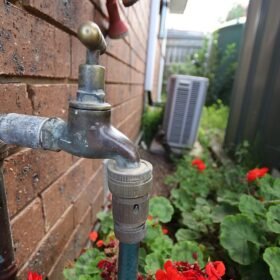If you’re facing the task of remove a toilet flange, don’t worry! With a few basic tools and some simple steps, you can easily remove a toilet flange without any hassle. In this guide, we’ll take you through the process of removing a toilet flange step-by-step, making it a straightforward task for you.
Introduction
The toilet flange is an essential component that connects your toilet to the drainpipe and ensures a proper seal. Over time, you may need to remove the toilet flange for repairs or replacement. By following the steps below, you can accomplish this task with ease.
Tools and Materials You’ll Need
Before you begin, gather the following tools and materials:
Adjustable wrench
Screwdriver
Putty knife
Hacksaw
Bucket
Rags or towels
Step 1: Preparation
Create a comfortable working space by clearing the area around the toilet. Remove any obstacles or items that may get in your way. Place rags or towels on the floor to protect it from any spills or debris.
Step 2: Shut Off the Water Supply
Locate the shut-off valve behind or near the toilet and turn it clockwise until it stops. This will shut off the water supply to the toilet. Flush the toilet to drain any remaining water from the tank and bowl. Remove a Toilet Flange
Step 3: Remove the Toilet
Disconnect the water supply line connected to the toilet tank by unscrewing the coupling nut. Remove the tank lid and set it aside. Take off the caps covering the bolts at the base of the toilet and use an adjustable wrench to loosen and remove the nuts. Lift the toilet straight up and place it on a towel or rag to protect the floor.
Step 4: Inspect the Flange
Examine the condition of the flange to determine if it needs replacement. Look for any cracks, corrosion, or signs of damage. If the flange is in good condition, you may proceed to reinstall the toilet. However, if it needs replacement, continue to the next step.
Step 5: Loosen and Remove the Bolts
Using a screwdriver or adjustable wrench, loosen and remove the bolts that secure the toilet flange to the floor. These bolts are usually located at opposite ends of the flange. Set the bolts aside, as you may reuse them if installing a new flange. Remove a Toilet Flange
Step 6: Remove the Flange
If the flange is glued or cemented to the drainpipe, carefully use a hacksaw to cut through it. Take your time and ensure that you don’t damage the drainpipe. Once the flange is cut or loosened, lift it up and away from the drainpipe. Place the old flange in a bucket or dispose of it appropriately.
Step 7: Clean the Area
Using a putty knife or craper, remove any old wax or adhesive residue from the floor. Thoroughly clean the area around the drainpipe and ensure it is free from any debris.
Conclusion
Removing a toilet flange may seem like a daunting task, but by following these simple steps, you can accomplish it with ease. Remember to gather the necessary tools, prepare the workspace, and shut off the water supply before starting. Take your time and be cautious while removing the toilet and inspecting the flange. If necessary, replace the flange and clean the area before reinstalling the toilet. By following these steps, you can successfully remove a toilet flange and address any repairs or replacements needed. Remove a Toilet Flange
FAQs (Frequently Asked Questions)
Q1: Can I reuse the old toilet flange?
It is generally recommended to replace the toilet flange if it shows signs of wear or damage. Reusing a damaged flange may lead to future leaks or instability.
Q2: How do I know if the toilet flange needs replacement?
Inspect the flange for cracks, corrosion, or damage. If you notice any of these issues, it’s best to replace the flange to ensure a proper seal.
Q3: Can I remove the toilet flange without removing the toilet?
It is possible to remove the flange without removing the toilet, but it can be more challenging. Removing the toilet provides better access and allows for a thorough inspection of the flange.
Q4: Should I hire a professional plumber to remove the toilet flange?
If you’re uncomfortable or unsure about removing a toilet flange, it’s recommended to hire a professional plumber. They have the expertise and tools to handle the task efficiently and ensure proper installation.
Q5: How often should I inspect the toilet flange for maintenance?
It’s a good practice to inspect the toilet flange annually or whenever you notice any issues such as leaks or toilet movement. Regular inspections help identify problems early on and prevent further damage.
In conclusion, removing a toilet flange can be done easily by following the steps outlined in this guide. Remember to prioritize safety, take your time, and consult a professional if needed. With proper care and attention, you can successfully remove a toilet flange and maintain a well-functioning bathroom.







